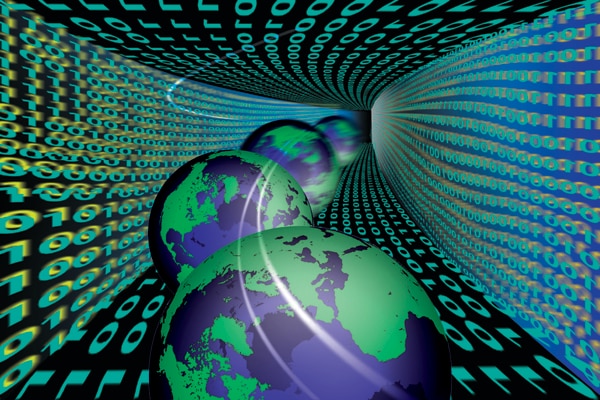
A Life of Love and Crime - Not Really
Cyberspace: From an idea in science fiction, to a place where millions seek an alternative existence
Love, sex, sensory experiences and even crime-it all happens in cyberspace. This abstract ‘space’ that exists in the electronic world, was first conceived by William Gibson in a short story called ‘Burning Chrome’. The term became popular with his 1984 sci-fi novel, Neuromancer. “Cyberspace. A consensual hallucination experienced daily by billions… A graphic representation of data abstracted from the banks of every computer in the human system…” These lines from the book were just a vision that Gibson had. Twenty-five years on, we know it was bang on.
Virtually Real
Software robots that mimic real chat and virtual pets that feed, play, grow and even defecate? Yes, it’s for real. In 1997, Dr. Michael Mauldin, founder of Lycos search engine, created Sylvie, the world’s first virtual person. Today such chatbots are an integral, often invisible part of many Internet businesses. In 1996, Aki Maita of Japan created Tamagotchi, a virtual-pet that mimicked a real pet. Over 70 million such “pets” have been sold worldwide since.
Taste Magic
Software programs can also mimic taste and smell. In 1997, scientists from NASA and the California Institute of Technology jointly developed an E-nose that could “smell” a range of odours and flavours. Just a year later researchers at the University of Texas created an “electronic tongue” by laying hundreds of micro-sensors on a silicon wafer. It could detect sweet, sour, salty, bitter and umami (savoury) and also “taste” cholesterols in blood or cocaine in urine (a task that is best left to e-tongues).
Sex
Given that close to a third of all Internet sites are porn Web sites, it should not come as a surprise that developers and businesses will try to find ways to simulate sex in cyberspace. The most radical of these is the “Sinulator”, a cyber-sex package consisting of vibrators (for men or women) and software that allows it to be controlled over the Internet. Connect two of them, and sex over the Internet is as real as chatting.
Alternative World
The most radical development in cyberspace was the creation of a virtual world, complete with people, animals, corporations, towns, money and even crimes - Second Life. Digital “avatars” of human users can live here with other avatars, doing pretty much the same activities that exist in the real world.















